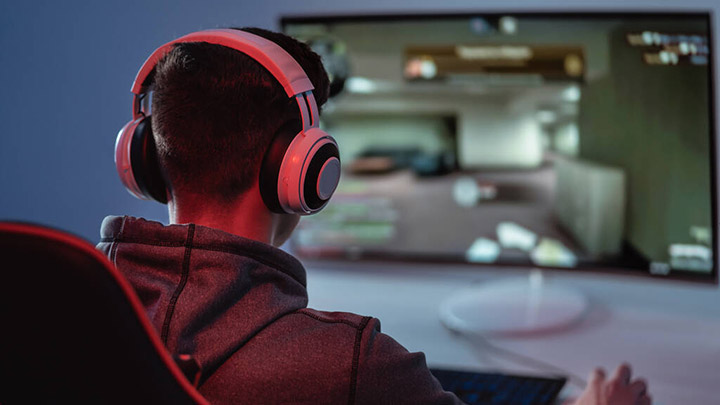Bluetooth headphones and earbuds have become popular phone accessories for entertainment, travel, workouts, and gaming. However, one common issue that can hinder that experience is audio latency. The delay between the transmission of an audio signal and its playback can lead to out-of-sync sound, diminishing our enjoyment.
Fortunately, low latency technology aims to minimize this problem. In this article, we’ll explore what is low latency, how to reduce Bluetooth latency, and show you how to determine the amount of latency in headphones.
In This Article
- What is Latency?
- What Does Low Latency Mean for Headphones?
- How to Reduce Bluetooth Latency
- How good is aptX Low Latency?
- How to Determine the Amount Latency
What is Latency?
Bluetooth latency refers to the delay in audio playback when using Bluetooth for wireless audio transmission. It encompasses the time it takes for audio data to be transmitted, processed, and played on the receiving device like headphones, earbuds and speakers.
What Does Low Latency Mean for Headphones?
Low latency is crucial for headphones, earbuds and headsets, especially in gaming, watching videos, and professional audio applications. It refers to the minimal delay between the audio signal being transmitted wirelessly and its playback in the headphones. In gaming, low latency ensures real-time audio cues, allowing for quick reactions and an immersive experience.
Similarly, for videos, low latency preserves lip-sync accuracy and avoids noticeable delays between audio and video components. In professional audio, low latency is essential for real-time monitoring and precise adjustments.
Generally, the average person cannot perceive a difference in latency below 20ms, and many cannot discern a difference between 40 to 80ms. However, when the latency exceeds 150ms, the difference becomes noticeable. Low latency true wireless headphones and earbuds offer a latency of less than 100ms for optimal sound performance.
How to Reduce Bluetooth Latency
Bluetooth devices utilize a variety of digital audio encoders and decoders, known as codecs, to transfer data from the audio source to the Bluetooth receiver in the headphones. Different codecs have their own advantages and disadvantages, including their impact on latency and signal quality.
Most true wireless headphones and earbuds support the Sub Band Codec (SBC), which typically has a minimum delay of 200 to 220ms. However, there are additional codecs commonly found in popular Bluetooth headphones and Bluetooth adapters that offer improved performance:
LDAC
Sony’s proprietary Bluetooth audio codec with variable bit rate support.
aptX
Provides 48kHz/16-bit audio and better sound quality than the SBC codec. The latency typically ranges between 100 to 170ms.
aptX HD
An improvement over the aptX codec, offering 48kHz/24-bit audio.
aptX Low Latency
An innovative codec offering a latency as low as 30 to 40ms, making it ideal for gaming and videos.
FastStream
Offers two-way support for SBC audio with a latency of less than 40ms. However, it’s not commonly found in consumer Bluetooth devices.
For these codecs to work, both the transmitter and the receiving device must support the same audio codec. For an immersive audio experience in gaming and video watching, aptX Low Latency and FastStream are ideal choices.
How good is aptX Low Latency?
Qualcomm, the semiconductor giant, acquired the rights to the original aptX codec and developed two versions: aptX HD and aptX Low Latency. While aptX HD focuses on delivering high-quality sound, aptX Low Latency is specifically designed for gamers.
It addresses the issue of high latency (more than 100ms) in home entertainment devices. It’s important to note that Apple devices like iPhones do not support the aptX codec. Apple employs its W1 codec to achieve low-latency audio over Bluetooth devices. Therefore, purchasing aptX codec earphones for iOS devices will not affect sound output.
How to Determine the Amount Latency
Determining the exact amount of latency Bluetooth headphones have is not straightforward. However, there are two main ways to estimate the latency of specific headphones or earbuds:
Codec Version
By knowing the codec version supported by the headphones or earbuds, you can understand their capabilities and predict the latency range. This information can usually be found in the operation manual supplied with the headphones or on the official website or product description of the headphones or earbuds.
Bluetooth Version
Identifying the Bluetooth version supported by the specific model is another step in estimating latency. Bluetooth versions vary, and understanding the supported versions helps you know the codecs a certain model supports.
It’s important to note that Bluetooth versions have downward compatibility, meaning a smartphone with support for Bluetooth 5.0 will work with headphones on lower Bluetooth versions and vice versa. You can find the Bluetooth version information in the documentation, product manuals, specification sheets, or the product box.
Conclusion
Low latency is a crucial factor to consider when choosing wireless headphones and earbuds, especially for applications like gaming and video watching. The right combination of codecs and Bluetooth versions can significantly reduce audio latency and deliver a seamless listening experience.
While there is no way to completely eliminate latency, selecting headphones that support aptX Low Latency or FastStream codecs and the latest Bluetooth version can help minimize delays. So, next time you’re in the market for true wireless headphones or earbuds, be sure to consider their latency performance to enhance your audio experience.

